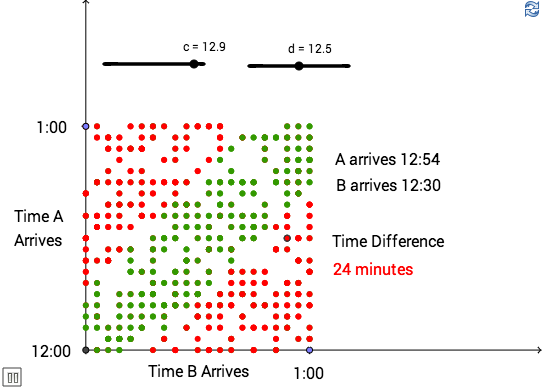Four right triangles with sides a, b, and hypotenuse c, are arranged to form square GHIJ. You may adjust the size of the triangles by moving point G and their shape by moving point Q. Answer questions 1 and 2 first before moving the slider.
1) What type of quadrilateral is the white region? Justify your answer.
2) What is the area of the quadrilateral in (1)?
3) Move slider R to the extreme right to show slider T. Then, move slider T to the extreme right. What type/s of quadrilateral are the two white regions? Justify your answer.
4.) What are the areas of the quadrilaterals in (3)?
5.) How does the area of the quadrilateral in (1) relate to the areas of the quadrilaterals in (3)?
6.) What equation can we form from the relationship in (4) in terms of a, b, and c?

